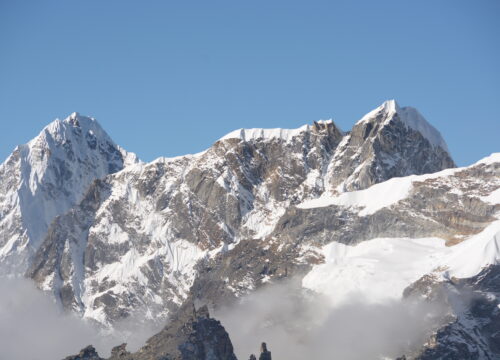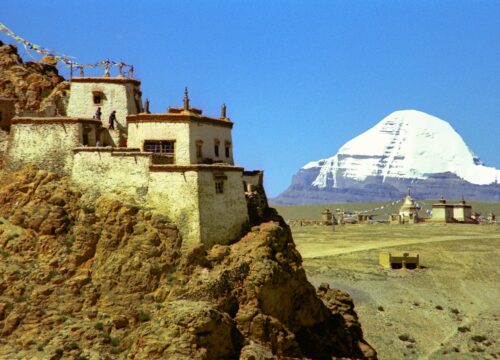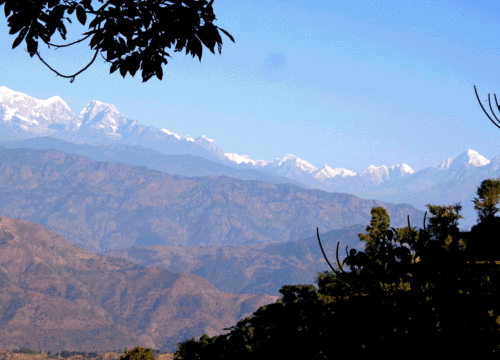Dhorpatan Hunting Reserve
From
Duration
Tour Type
Explore Tours
Dhorpatan Hunting Reserve, located in western Nepal, is a unique and ecologically rich protected area established in 1987. The reserve spans 1,325 square kilometers across the Rukum, Myagdi, and Baglung districts. With the majestic backdrop of the western Himalayas, it features a stunning landscape of rugged terrain, dense forests, high-altitude pastures, and snow-capped peaks. The elevation within the reserve ranges from 2,850 meters to over 7,000 meters, creating a variety of habitats that support a diverse range of flora and fauna.
This reserve is home to several endangered and rare species, making it crucial for biodiversity conservation. Notable wildlife species include the elusive snow leopard, the blue sheep (known as “bharal”), and the red panda. Additionally, the reserve boasts rich birdlife, with species such as the Himalayan monal (Nepal’s national bird), various pheasants, and several raptors, contributing to its ecological significance. The presence of these species not only emphasizes the conservation value of the reserve but also attracts wildlife enthusiasts and researchers from around the world.
One distinct feature of Dhorpatan Hunting Reserve is its dual purpose: conservation and regulated hunting. It is the only hunting reserve in Nepal where controlled hunting of specific species is allowed under strict regulations. This approach is designed to maintain ecological balance while generating revenue to support conservation efforts and benefit local communities. Hunting permits are issued selectively to ensure minimal and sustainable impact on wildlife populations. Although this model of conservation can be controversial, it aims to integrate the interests of conservation, local livelihoods, and tourism.
In addition to its natural and ecological significance, Dhorpatan Hunting Reserve holds cultural and historical importance. Indigenous communities, including the Magar and Gurung peoples, have coexisted with the natural environment for generations, contributing to the region’s rich cultural heritage. Their traditional knowledge and practices play a vital role in the sustainable management of the reserve.
Overall, Dhorpatan Hunting Reserve is a fascinating example of a protected area that balances wildlife conservation with sustainable use. It offers a unique opportunity for visitors to experience the natural beauty and biodiversity of the Himalayas while supporting conservation initiatives and local communities. Whether for trekking, wildlife observation, or hunting (under strict regulations), the reserve provides a memorable and enriching experience in one of Nepal’s most scenic and diverse landscapes.
Included/Exclude
Tour Amenities
Itinerary
- Activities:
- Arrive in Kathmandu (1,400m).
- Obtain permits (Hunting Reserve Entry Permit: ~$100/week; Hunting Permit varies by species).
- Gear check and briefing with your guide/outfitter.
- Stay: Hotel in Kathmandu.
- Travel:
- Fly to Pokhara (25 mins) or drive (6–7 hours).
- Continue by road to Dang (5–6 hours via rough terrain; 4WD required).
- Highlights:
- Scenic views of the Dhaulagiri range.
- Stay: Guesthouse in Dang.
- Travel: Rugged 120 km drive to reserve HQ in Gustang/Dhorpatan Valley (3,000m).
- Highlights:
- Check-in at reserve office for permit verification.
- Visit Tibrikot Village (Magar community).
- Stay: Camping or basic teahouse.
- Daily Activities:
- Hunting Zones: Focus on areas like Dogari, Seng Khola (blue sheep, tahr; hunting allowed March–April and Sept–Oct).
- Trekking Routes: Summit Mt. Gurja (7,193m base camp) or explore Phagune Pass (3,600m).
- Wildlife Spotting: Red pandas, pheasants, and over 200 bird species.
- Cultural Visits: Buddhist monasteries in Chepka, Thakali villages.
- Stay: Camping in designated zones.
- Travel: Retrace route to Dang.
- Highlights: Farewell dinner with local Dal Bhat.
- Stay: Guesthouse in Dang.
- Travel: Fly/drive back to Kathmandu.
- Optional: Explore Patan Durbar Square or shop in Thamel.
🌄 Overview
- Location: Western Nepal (Rukum, Myagdi, and Baglung districts)
- Elevation: 2,850–7,000 meters
- Best Season: March–April (spring) / September–November (autumn)
- Unique Aspect: Only legal hunting reserve in Nepal, home to blue sheep, Himalayan tahr, and red pandas.
🏞️ Key Attractions
- Dhorpatan Valley: Prime habitat for blue sheep and grasslands.
- Phagune Pass: Panoramic Himalayan views (Dhaulagiri, Annapurna).
- Dogari Hunting Block: Most active hunting area for trophy species.
- Chepka Monastery: Historic Buddhist site.
🧳 Practical Tips
- Permits:
- Hunting requires booking through registered outfitters (fees: $1,000–$10,000+ depending on game).
- General entry permit from Nepal Tourism Board.
- Gear: Warm layers, trekking boots, sleeping bag (-10°C), binoculars.
- Health: Acclimatize slowly; carry Diamox for altitude.
- Ethics: Follow strict no-plastic rules and respect local customs.
Hunting permits
- The cost of hunting permits depends on the species you hunt, the duration of the hunt, and the number of hunters
Filming permits
- A special permit is required to film or make a documentary in the reserve
- The cost of a filming permit is:
- US$ 1,500 for foreigners



